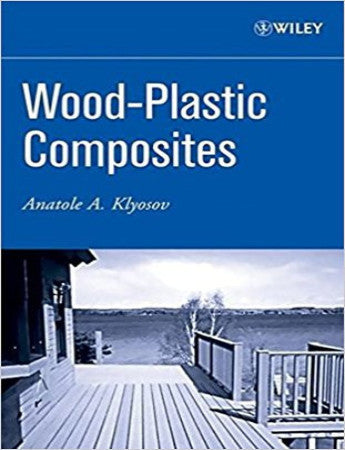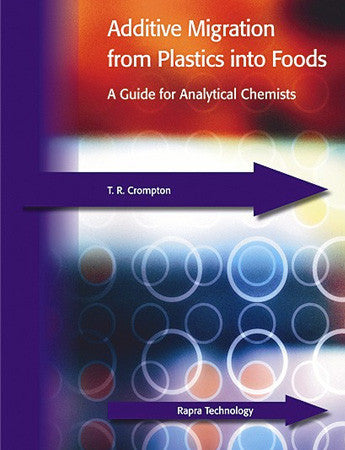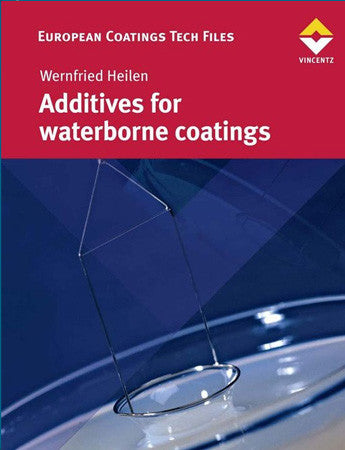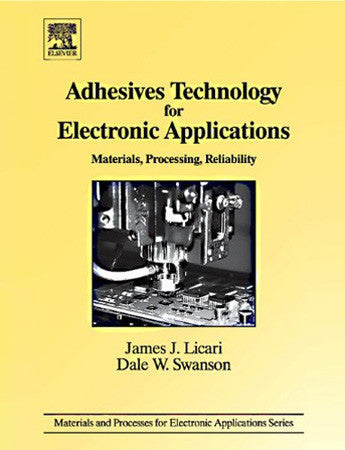Wood-Plastic Composites
Preface.
1. Foreword-Overview Wood-Plastic Composites.
WPC, pricing restrictions.
WPC, brands and manufacturers.
Flexural strength.
Flexural modulus, deflection.
Deck boards.
Stair treads.
Thermal expansion-contraction.
Shrinkage.
Slip resistance.
Water absorption, swell, buckling.
Microbial degradation.
Termite resistance.
Flammability.
Oxidation and crumbling.
Photo-oxidation and fading.
Wood-plastic composites - products, trends, market size and dynamics, and unsolved (or only partially solved) problems.
WPC products.
The public view, perception.
WPC market size and dynamics.
Competition on the WPC market.
Unsolved (or only partially solved) R&D problems.
Examples of wood-plastic composite deck boards.
References.
2. Composition of wood-plastic composites: thermoplastics.
Introduction.
Polyethylene.
Polypropylene.
Polyvinyl Chloride.
Acrylonitrile-Butadiene-Styrene copolymer (ABS).
Nylon 6 and other polyamides.
Conclusion.
Addendum: ASTM tests covering definitions of technical terms and their contractions used in plastic industry and specifications of plastics.
References.
3. Composition of wood-plastic composites: cellulose and lignocellulose fillers.
Introduction.
A brief history of cellulose fillers in WPC in U.S. patents.
Beginning of WPC. Thermosetting materials.
Cellulose as a reinforcing ingredient in thermoplastic compositions.
Improving mechanical and other properties of WPC.
Improving the compatibility of the fillers with the polymeric matrix. Coupling agents.
Plastics beyond HDPE in wood-plastic composite materials.
Cellulose-polyolefin composite pellets.
Foamed wood-plastic composites.
Biodegradable wood-plastic composites.
General properties of lignocellulosic fiber as fillers.
Chemical composition.
Detrimental effect of lignin.
Detrimental effect of hemicellulosics. Steam explosion.
Aspect ratio.
Density (specific gravity).
Particle size.
Particle shape.
Particle size distribution.
Particle surface area.
Moisture content, the ability to absorb water.
The ability of filler to absorb oil.
Flammability.
Effect on mechanical properties of the composite material.
Effect on fading and durability of plastics and composites.
Effect on hot melt viscosity.
Effect on mold shrinkage.
Wood fiber.
Wood flour.
Saw dust.
Rice hulls.
VOC from rice hulls.
Long natural fiber.
Papermaking sludge.
Biodac.
VOC from Biodac.
Rice hulls and Biodac as antioxidants in WPC.
References (other than patents).
References (patents).
4. Composition of wood-plastic composites: mineral fillers.
Introduction.
General properties of mineral fillers.
Chemical composition.
Aspect ratio.
Density (specific gravity).
Particle size.
Particle shape.
Particle size distribution.
Particle surface area.
Moisture content, the ability to absorb water.
The ability to absorb oil.
Flame retardant properties.
Effect on mechanical properties of the composite material.
Effect on hot melt viscosity.
Effect on mold shrinkage.
Thermal properties.
Color, optical properties.
Effect on fading and durability of plastics and composites.
Health and safety.
Fillers.
Calcium carbonate.
Talc.
Biodac (a blend of cellulose and mineral fillers).
Silica.
Kaolin clay.
Mica.
Wollastonite.
Glass fibers.
Fly ash.
Carbon black.
Nanofillers and nanocomposites.
Conclusions.
References.
5. Composition of wood-plastic composites: coupling agents.
Introduction.
A brief overview of the chapter.
Maleated polyolefins.
Organosilanes.
MetablenTM A3000.
Other coupling agents.
Effect of coupling agents on mechanical properties of wood-plastic composites: experimental data.
Mechanisms of cross-linking, coupling and/or compatibilizing effects.
Spectroscopic studies.
Rheological studies.
Kinetic studies.
Other considerations.
Effect of coupling agents on WPC properties: a summary.
Effect on flexural and tensile modulus.
Effect on flexural and tensile strength.
Effect on water absorption.
Lubricants, compatible and not compatible with coupling agents.
References.
6. Density (specific gravity) of wood-plastic composites and its effect on WPC properties.
Introduction.
Effect of density (specific gravity) of WPC.
Effect on flexural strength and modulus.
Effect on oxidation and degradation.
Effect on flammability, ignition, flame spread.
Effect on moisture content and water absorption.
Effect on microbial contamination/degradation.
Effect on shrinkage.
Effect on the coefficient of friction (the slip coefficient).
Density of cross-sectional areas of hollow profiles of GeoDeck WPC boards.
Densities and weight of some commercial wood-plastic deck boards.
Determination of density of wood-plastic composites using a sink/float method.
ASTM tests recommended for determination of the specific gravity (density).
ASTM D 1505 “Standard test method for density of plastics by the density-gradient technique”.
ASTM D 1622 “Standard test method for apparent density of rigid cellular plastics”.
ASTM D 1895 “Standard test methods for apparent density, bulk factor, and pourability of plastic materials”.
References.
7. Flexural strength (MOR) and flexural modulus (MOE) of composite materials and profiles.
Introduction.
Basic definitions and equations.
ASTM recommendations.
Flexural strength of composite deck boards.
Flexural modulus of composite deck boards.
Flexural modulus of neat HDPE and other plastics, and comparisons with that for wood-plastic composites.
A deck board used as a stair tread: a critical role of flexural modulus.
Deflection of composite materials: Case studies.
1. Deflection and bending moment of a soundwall under windloads.
2. Deflection of a fence board.
3. Deflection of wood-plastic composite joists.
4. Deflection of a deck under a hot tub.
5. Deflection of a hollow deck board filled with hot water.
6. Deflection and creep of composite deck boards.
Guardrail systems.
Composite (and PVC) railing systems for which ICC-ES reports were issued until October 2006.
Combined flexural and shear strength: a “shotgun” test 537.
Mathematical modeling of wood-plastic composites and the real world.
References.
8. Compressive and tensile strength and modulus of composite profiles.
Introduction.
Basic definitions and equations.
ASTM recommendations.
Tensile strength of composite materials: examples.
Compressive strength of composite materials.
Tensile modulus of elasticity of composite materials.
Compressive modulus of composite materials.
References.
9. Linear shrinkage of extruded wood-plastic composites.
Introduction.
Origin of shrinkage.
Size of shrinkage.
Effect of density (specific gravity) of WPC on its shrinkage.
Effect of extrusion regime on shrinkage.
Annealing of composite boards.
Warranty claims: GeoDeck composite deckboards.
Examples of GeoDeck boards shrinkage on a deck.
10. Temperature driven expansion-contraction of wood-plastic composites. Linear coefficient of thermal expansion-contraction.
Introduction.
Linear coefficient of expansion-contraction.
Some reservations in applicability of coefficients of expansion-contraction.
ASTM tests recommended for determination of the linear coefficient of thermal expansion-contraction.
Linear coefficient of thermal expansion-contraction for wood-plastic composites. Effect of fillers and coupling agents.
Example: a case study.
References.
11. Slip resistance and coefficient of friction of composite deck boards.
Introduction.
Definitions.
Explanations and some examples.
Slip resistance of plastics.
Slip resistance of wood decks.
Slip resistance of wood-plastic composite decks.
ASTM tests recommended for determining static coefficient of friction.
Slip resistance using an inclined-plane method.
Effect of formulation of composite deck board on slip resistance. Slip enhancers.
References.
12. Water absorption by composite materials and related effects.
Introduction.
“Near-surface” vs. “into the bulk” distribution of absorbed water in composite materials.
Effect of mineral fillers on water absorption.
Swelling (dimensional instability), pressure development and buckling.
Short- and long-term water absorption.
ASTM recommendations.
Effect of cellulose content in composite materials on water absorption.
Effect of board density (specific gravity) on water absorption.
Moisture content of wood and wood-plastic composites.
Effect of water absorption on flexural strength and modulus.
Freeze-thaw resistance.
Effect of board density on freeze-thaw resistance - a case study.
Effect of board density and weathering on freeze-thaw resistance - a case study.
Effect of multiple freeze-thaw cycles.
Comparison of water absorption of some composite deck boards available on the market.
References.
13. Microbial degradation of wood-plastic composite materials and “black spots” on the surface. Mold resistance.
Introduction.
Microbial effects on wood-plastic composites.
Mold and spores.
Moisture and ventilation. Critical moisture content.
Wood decay fungi.
Biocides and “mold resistance”.
Preservatives for wood lumber.
CCA.
ACQ.
PCP.
Creosote.
Microorganisms active in degradation and staining of composite materials.
Molds.
Black mold.
Black algae.
Case study 1. Staining with a microbial pigment.
Case study 2. Deck as a mold incubator.
Case study 3. Black mold due to composite low density and high mosture.
Microbial infestation of wood-plastic composite materials.
Requirements for microbial growth on wood and wood-plastic composites.
Sensitivity and resistance of composite materials to microbial degradation. Examples.
ASTM tests recommended for microbial growth and degradation of wood-plastic composites.
Examples: wood.
Examples: wood-plastic composites.
Effect of formulation on sensitivity and resistance of wood-plastic composites to microbial degradation.
Biocides used (actually or under consideration) in wood-plastic composites.
Biocides: accelerated laboratory data and the real world.
References.
14. Flammability and fire rating of wood-plastic composites.
Introduction.
Flammability of wood.
Ignition of composite materials.
Flame spread indexes (FSI) and fire rating of composite materials.
Effect of mineral fillers on flammability.
Smoke and toxic gases, and smoke development index (SDI).
Flame retardants for plastics and composite materials.
ASTM recommendations.
Fire performance of composite decks and deck boards.
References.
15. Thermo- and photo-oxidative degradation and lifetime of composite building materials.
Introduction. Lifetime of plastics and plastic-based composites Examples.
Thermo-oxidation, photo-oxidation, oxidative degradation, and product crumbling and failure.
Factors accelerating the oxidative degradation of composites.
Density (specific gravity) of the composite.
Temperature.
The physical and the chemical structure of the polymer.
History of plastic (virgin, recycled).
The type and amount of cellulose fiber.
The type and amount of mineral fillers.
The presence of stress.
The presence of metal catalysts.
The presence of moisture.
Antioxidants and their amounts.
Solar radiation (UV light).
Amount of added regrinds, if any.
ASTM recommendations.
ASTM tests for oxidative induction time.
ASTM tests for determination of phenolic antioxidants in plastics.
Surface temperature of composite decking and railing systems.
Life span of zero-antioxidant GeoDeck decks in various areas of the U.S.
The OIT and lifetime of composite deck boards.
Durability (in terms of oxidative degradation) of wood-plastic composite decks available on the current market.
Oxidative degradation and crumbling of GeoDeck deck boards. History of the case and correction of the problem.
Density, porosity, and mechanical properties of GeoDeck before the problem had emerged.
Emerging of the problem.
Density (specific gravity) of GeoDeck boards in pre-October 2003.
Correction of the crumbling problem-- Antioxidant level.
Addendum. Test method for oxidative-induction time of filled composite material by differential scanning calorimetry.
Case studies.
GeoDeck decks crumbling in Arizona.
GeoDeck decks crumbling in Massachusetts.
GeoDeck voluntary recall.
Problem GeoDeck decks: installation time and warranty claims.
References.
16. Photo-oxidation and fading of composite building materials.
Introduction.
How fading is measured?
Fading. Some introductory definitions.
Accelerated and natural weathering of wood-plastic composite materials, and a correlation (or a lack of it) between them. The acceleration factor.
Fading of commercial wood-plastic composite materials.
Fading of composite deck boards vs. their crumbling due to oxidation.
Factors accelerating or slowing down fading of composites.
Density (specific gravity) of the composite.
Temperature.
UV absorbers and their amounts.
Pigments and their amounts.
Antioxidants and their amounts.
History of plastics (virgin, recycled).
Effect of moisture in the composite.
The type and amount of cellulose fiber.
Extruded vs. injection molded wood-plastic composite materials.
ASTM recommendations.
Addendum: Some definitions and technical terms used in descriptions of.
photodegradation of plastics and wood-plastic composites.
References.
17. Rheology and a selection of incoming plastics for composite materials.
Introduction. Rheology of neat and filled plastics, composite materials and regrinds.
Basic definitions and equations.
ASTM recommendations in the area of capillary rheometry.
ASTM recommendations in the area of rotational rheometry.
Common observation.
Neat plastics.
Composite materials.
Almost uncharted areas of composite and plastic rheology.
References.
Index.
This is the first book that presents an overview of the main principles underlying the composition of wood-plastic composite (WPC) materials and their performance in the real world. Focusing on the characteristics of WPC materials rather than their manufacture, this guide bridges the gap between laboratory-based research and testing and the properties WPC materials exhibit when they're used in decks, railing systems, fences, and other common applications
-Describes compositions of WPC materials, including thermoplastics, cellulose fiber, minerals, additives, and their properties
-Covers mechanical properties, microbial resistance, water absorption, flammability, slip resistance, thermal expansion-contraction, sensitivity to oxidation and solar radiation, and rheological properties of hot melts of WPC
-Covers subjects that determine esthetics, properties, performance, and durability of wood-plastic composite products -Includes comparisons of different ASTM methods and procedures that apply to specific properties
-Describes compositions of WPC materials, including thermoplastics, cellulose fiber, minerals, additives, and their properties
-Covers mechanical properties, microbial resistance, water absorption, flammability, slip resistance, thermal expansion-contraction, sensitivity to oxidation and solar radiation, and rheological properties of hot melts of WPC
-Covers subjects that determine esthetics, properties, performance, and durability of wood-plastic composite products -Includes comparisons of different ASTM methods and procedures that apply to specific properties
Preface.
1. Foreword-Overview Wood-Plastic Composites.
WPC, pricing restrictions.
WPC, brands and manufacturers.
Flexural strength.
Flexural modulus, deflection.
Deck boards.
Stair treads.
Thermal expansion-contraction.
Shrinkage.
Slip resistance.
Water absorption, swell, buckling.
Microbial degradation.
Termite resistance.
Flammability.
Oxidation and crumbling.
Photo-oxidation and fading.
Wood-plastic composites - products, trends, market size and dynamics, and unsolved (or only partially solved) problems.
WPC products.
The public view, perception.
WPC market size and dynamics.
Competition on the WPC market.
Unsolved (or only partially solved) R&D problems.
Examples of wood-plastic composite deck boards.
References.
2. Composition of wood-plastic composites: thermoplastics.
Introduction.
Polyethylene.
Polypropylene.
Polyvinyl Chloride.
Acrylonitrile-Butadiene-Styrene copolymer (ABS).
Nylon 6 and other polyamides.
Conclusion.
Addendum: ASTM tests covering definitions of technical terms and their contractions used in plastic industry and specifications of plastics.
References.
3. Composition of wood-plastic composites: cellulose and lignocellulose fillers.
Introduction.
A brief history of cellulose fillers in WPC in U.S. patents.
Beginning of WPC. Thermosetting materials.
Cellulose as a reinforcing ingredient in thermoplastic compositions.
Improving mechanical and other properties of WPC.
Improving the compatibility of the fillers with the polymeric matrix. Coupling agents.
Plastics beyond HDPE in wood-plastic composite materials.
Cellulose-polyolefin composite pellets.
Foamed wood-plastic composites.
Biodegradable wood-plastic composites.
General properties of lignocellulosic fiber as fillers.
Chemical composition.
Detrimental effect of lignin.
Detrimental effect of hemicellulosics. Steam explosion.
Aspect ratio.
Density (specific gravity).
Particle size.
Particle shape.
Particle size distribution.
Particle surface area.
Moisture content, the ability to absorb water.
The ability of filler to absorb oil.
Flammability.
Effect on mechanical properties of the composite material.
Effect on fading and durability of plastics and composites.
Effect on hot melt viscosity.
Effect on mold shrinkage.
Wood fiber.
Wood flour.
Saw dust.
Rice hulls.
VOC from rice hulls.
Long natural fiber.
Papermaking sludge.
Biodac.
VOC from Biodac.
Rice hulls and Biodac as antioxidants in WPC.
References (other than patents).
References (patents).
4. Composition of wood-plastic composites: mineral fillers.
Introduction.
General properties of mineral fillers.
Chemical composition.
Aspect ratio.
Density (specific gravity).
Particle size.
Particle shape.
Particle size distribution.
Particle surface area.
Moisture content, the ability to absorb water.
The ability to absorb oil.
Flame retardant properties.
Effect on mechanical properties of the composite material.
Effect on hot melt viscosity.
Effect on mold shrinkage.
Thermal properties.
Color, optical properties.
Effect on fading and durability of plastics and composites.
Health and safety.
Fillers.
Calcium carbonate.
Talc.
Biodac (a blend of cellulose and mineral fillers).
Silica.
Kaolin clay.
Mica.
Wollastonite.
Glass fibers.
Fly ash.
Carbon black.
Nanofillers and nanocomposites.
Conclusions.
References.
5. Composition of wood-plastic composites: coupling agents.
Introduction.
A brief overview of the chapter.
Maleated polyolefins.
Organosilanes.
MetablenTM A3000.
Other coupling agents.
Effect of coupling agents on mechanical properties of wood-plastic composites: experimental data.
Mechanisms of cross-linking, coupling and/or compatibilizing effects.
Spectroscopic studies.
Rheological studies.
Kinetic studies.
Other considerations.
Effect of coupling agents on WPC properties: a summary.
Effect on flexural and tensile modulus.
Effect on flexural and tensile strength.
Effect on water absorption.
Lubricants, compatible and not compatible with coupling agents.
References.
6. Density (specific gravity) of wood-plastic composites and its effect on WPC properties.
Introduction.
Effect of density (specific gravity) of WPC.
Effect on flexural strength and modulus.
Effect on oxidation and degradation.
Effect on flammability, ignition, flame spread.
Effect on moisture content and water absorption.
Effect on microbial contamination/degradation.
Effect on shrinkage.
Effect on the coefficient of friction (the slip coefficient).
Density of cross-sectional areas of hollow profiles of GeoDeck WPC boards.
Densities and weight of some commercial wood-plastic deck boards.
Determination of density of wood-plastic composites using a sink/float method.
ASTM tests recommended for determination of the specific gravity (density).
ASTM D 1505 “Standard test method for density of plastics by the density-gradient technique”.
ASTM D 1622 “Standard test method for apparent density of rigid cellular plastics”.
ASTM D 1895 “Standard test methods for apparent density, bulk factor, and pourability of plastic materials”.
References.
7. Flexural strength (MOR) and flexural modulus (MOE) of composite materials and profiles.
Introduction.
Basic definitions and equations.
ASTM recommendations.
Flexural strength of composite deck boards.
Flexural modulus of composite deck boards.
Flexural modulus of neat HDPE and other plastics, and comparisons with that for wood-plastic composites.
A deck board used as a stair tread: a critical role of flexural modulus.
Deflection of composite materials: Case studies.
1. Deflection and bending moment of a soundwall under windloads.
2. Deflection of a fence board.
3. Deflection of wood-plastic composite joists.
4. Deflection of a deck under a hot tub.
5. Deflection of a hollow deck board filled with hot water.
6. Deflection and creep of composite deck boards.
Guardrail systems.
Composite (and PVC) railing systems for which ICC-ES reports were issued until October 2006.
Combined flexural and shear strength: a “shotgun” test 537.
Mathematical modeling of wood-plastic composites and the real world.
References.
8. Compressive and tensile strength and modulus of composite profiles.
Introduction.
Basic definitions and equations.
ASTM recommendations.
Tensile strength of composite materials: examples.
Compressive strength of composite materials.
Tensile modulus of elasticity of composite materials.
Compressive modulus of composite materials.
References.
9. Linear shrinkage of extruded wood-plastic composites.
Introduction.
Origin of shrinkage.
Size of shrinkage.
Effect of density (specific gravity) of WPC on its shrinkage.
Effect of extrusion regime on shrinkage.
Annealing of composite boards.
Warranty claims: GeoDeck composite deckboards.
Examples of GeoDeck boards shrinkage on a deck.
10. Temperature driven expansion-contraction of wood-plastic composites. Linear coefficient of thermal expansion-contraction.
Introduction.
Linear coefficient of expansion-contraction.
Some reservations in applicability of coefficients of expansion-contraction.
ASTM tests recommended for determination of the linear coefficient of thermal expansion-contraction.
Linear coefficient of thermal expansion-contraction for wood-plastic composites. Effect of fillers and coupling agents.
Example: a case study.
References.
11. Slip resistance and coefficient of friction of composite deck boards.
Introduction.
Definitions.
Explanations and some examples.
Slip resistance of plastics.
Slip resistance of wood decks.
Slip resistance of wood-plastic composite decks.
ASTM tests recommended for determining static coefficient of friction.
Slip resistance using an inclined-plane method.
Effect of formulation of composite deck board on slip resistance. Slip enhancers.
References.
12. Water absorption by composite materials and related effects.
Introduction.
“Near-surface” vs. “into the bulk” distribution of absorbed water in composite materials.
Effect of mineral fillers on water absorption.
Swelling (dimensional instability), pressure development and buckling.
Short- and long-term water absorption.
ASTM recommendations.
Effect of cellulose content in composite materials on water absorption.
Effect of board density (specific gravity) on water absorption.
Moisture content of wood and wood-plastic composites.
Effect of water absorption on flexural strength and modulus.
Freeze-thaw resistance.
Effect of board density on freeze-thaw resistance - a case study.
Effect of board density and weathering on freeze-thaw resistance - a case study.
Effect of multiple freeze-thaw cycles.
Comparison of water absorption of some composite deck boards available on the market.
References.
13. Microbial degradation of wood-plastic composite materials and “black spots” on the surface. Mold resistance.
Introduction.
Microbial effects on wood-plastic composites.
Mold and spores.
Moisture and ventilation. Critical moisture content.
Wood decay fungi.
Biocides and “mold resistance”.
Preservatives for wood lumber.
CCA.
ACQ.
PCP.
Creosote.
Microorganisms active in degradation and staining of composite materials.
Molds.
Black mold.
Black algae.
Case study 1. Staining with a microbial pigment.
Case study 2. Deck as a mold incubator.
Case study 3. Black mold due to composite low density and high mosture.
Microbial infestation of wood-plastic composite materials.
Requirements for microbial growth on wood and wood-plastic composites.
Sensitivity and resistance of composite materials to microbial degradation. Examples.
ASTM tests recommended for microbial growth and degradation of wood-plastic composites.
Examples: wood.
Examples: wood-plastic composites.
Effect of formulation on sensitivity and resistance of wood-plastic composites to microbial degradation.
Biocides used (actually or under consideration) in wood-plastic composites.
Biocides: accelerated laboratory data and the real world.
References.
14. Flammability and fire rating of wood-plastic composites.
Introduction.
Flammability of wood.
Ignition of composite materials.
Flame spread indexes (FSI) and fire rating of composite materials.
Effect of mineral fillers on flammability.
Smoke and toxic gases, and smoke development index (SDI).
Flame retardants for plastics and composite materials.
ASTM recommendations.
Fire performance of composite decks and deck boards.
References.
15. Thermo- and photo-oxidative degradation and lifetime of composite building materials.
Introduction. Lifetime of plastics and plastic-based composites Examples.
Thermo-oxidation, photo-oxidation, oxidative degradation, and product crumbling and failure.
Factors accelerating the oxidative degradation of composites.
Density (specific gravity) of the composite.
Temperature.
The physical and the chemical structure of the polymer.
History of plastic (virgin, recycled).
The type and amount of cellulose fiber.
The type and amount of mineral fillers.
The presence of stress.
The presence of metal catalysts.
The presence of moisture.
Antioxidants and their amounts.
Solar radiation (UV light).
Amount of added regrinds, if any.
ASTM recommendations.
ASTM tests for oxidative induction time.
ASTM tests for determination of phenolic antioxidants in plastics.
Surface temperature of composite decking and railing systems.
Life span of zero-antioxidant GeoDeck decks in various areas of the U.S.
The OIT and lifetime of composite deck boards.
Durability (in terms of oxidative degradation) of wood-plastic composite decks available on the current market.
Oxidative degradation and crumbling of GeoDeck deck boards. History of the case and correction of the problem.
Density, porosity, and mechanical properties of GeoDeck before the problem had emerged.
Emerging of the problem.
Density (specific gravity) of GeoDeck boards in pre-October 2003.
Correction of the crumbling problem-- Antioxidant level.
Addendum. Test method for oxidative-induction time of filled composite material by differential scanning calorimetry.
Case studies.
GeoDeck decks crumbling in Arizona.
GeoDeck decks crumbling in Massachusetts.
GeoDeck voluntary recall.
Problem GeoDeck decks: installation time and warranty claims.
References.
16. Photo-oxidation and fading of composite building materials.
Introduction.
How fading is measured?
Fading. Some introductory definitions.
Accelerated and natural weathering of wood-plastic composite materials, and a correlation (or a lack of it) between them. The acceleration factor.
Fading of commercial wood-plastic composite materials.
Fading of composite deck boards vs. their crumbling due to oxidation.
Factors accelerating or slowing down fading of composites.
Density (specific gravity) of the composite.
Temperature.
UV absorbers and their amounts.
Pigments and their amounts.
Antioxidants and their amounts.
History of plastics (virgin, recycled).
Effect of moisture in the composite.
The type and amount of cellulose fiber.
Extruded vs. injection molded wood-plastic composite materials.
ASTM recommendations.
Addendum: Some definitions and technical terms used in descriptions of.
photodegradation of plastics and wood-plastic composites.
References.
17. Rheology and a selection of incoming plastics for composite materials.
Introduction. Rheology of neat and filled plastics, composite materials and regrinds.
Basic definitions and equations.
ASTM recommendations in the area of capillary rheometry.
ASTM recommendations in the area of rotational rheometry.
Common observation.
Neat plastics.
Composite materials.
Almost uncharted areas of composite and plastic rheology.
References.
Index.
Anatole A. Klyosov, PHD, was Consulting Vice President of LDI Composites Co. (formerly Kadant Composites, where he was Vice President of research and development). Dr. Klyosov was also professor of biochemistry at Harvard University for eight years. He is currently Chief Scientist at Pro-Pharmaceuticals, Inc. He has published almost 300 peer-reviewed articles, thirty-five patents, and a number of books.




